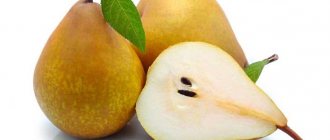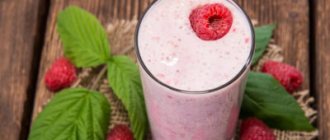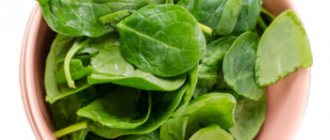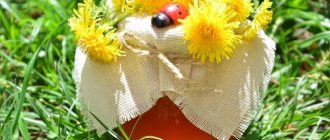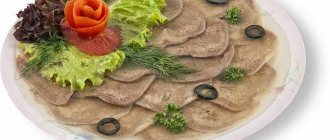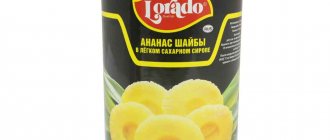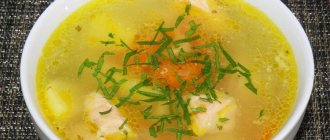Among fans of holidays in Asian countries, the small exotic fruit lychee has become a favorite. It is a reddish fruit of an evergreen plant of the Sapindaceae family. Loves tropical climates, widespread in Southeast Asia: China and Japan. Also grows in Africa, India, South America and the southern states of the USA. In some of them, the fruit is called “dragon eye” and “Chinese plum”.
Description of the plant and fruits
Litchi chinensis is evergreen, grows up to 20 m high in nature, and up to 10 m high on plantations. The pointed leaves are pair-pinnate, compound, lanceolate or elliptical in shape, located opposite each other. After germination they are reddish and gradually acquire a dark green color.
Photo: how the Lychee fruit grows
Fragrant flowers, greenish or white, appear in spring and form umbrella-shaped inflorescences. They have no petals, but only 4 or 5 sepals. Numerous fruits arranged in groups develop from the flowers.
Lychee fruits are small fruits, the size of plums, covered with a red or dark pink peel, dotted with tubercles in the form of spines (reminiscent of a pine cone), inside there is a juicy milky pulp with a sweet, slightly spicy aroma, slightly reminiscent of the smell of nutmeg, sweet to the taste . Inside the fruit there is one large brown seed, similar to a chestnut.
As their names suggest, the plants are native to the southern part of China, where they have been used in a variety of ways in medicine and cooking for thousands of years. Later they appeared in Malaysia and Vietnam. Now lychees are also cultivated in the subtropical regions of India, Taiwan, Cambodia and Mauritius. A small number of trees grow in some southern states of the USA, Israel, Australia, Mexico, Brazil, South Africa, Kenya and Madagascar.
Litchi chinensis prefers high air humidity, hot summers and frost-free winters. However, during the winter months they need cold, otherwise they will not produce flowers. Up to 150 kg of harvest is harvested from one old tree per year.
Harm to lychee, contraindications
Main contraindications:
- product intolerance;
- gout;
- kidney dysfunction;
- children under 2 years of age.
You shouldn't eat too many fruits. If consumed in excess, an allergic reaction occurs, accompanied by inflammation of the oral mucosa and skin rashes.
Eating unripe fruits can cause great harm to health. They contain hypoglycine, a phytotoxin that causes a sharp decrease in blood sugar.
Beneficial properties and contraindications of lychee fruit
Beneficial properties 1. Fruits are a valuable food product that contains a lot of vitamins (especially C), antioxidants, flavonoids and anthocyanins. Since lychees are 80% water, they are low in calories. The B vitamins contained in Chinese plums are essential for metabolism, and potassium is important for the functioning of muscles and nerve cells.
2. Litchi chinensis wood is highly prized as it is strong and durable. It is used in construction, for making carts and in carpentry.
3. In Asian countries, ulcers are treated with lychee. After cutting into circles, they are applied to the sore spot.
4. Chinese medicine uses fruits, peels and seeds. They are believed to be effective for orchitis, stomach and menstrual pain, and neuralgia.
5. The healing properties of the plant are studied by traditional medicine specialists. It is recommended to gargle with decoctions of roots, flowers and bark.
6. In China and Florida (USA), a lot of honey is collected on lychee plantations.
Contraindications According to American scientists from Atlanta, with excessive consumption of Chinese plums, they cause toxic hypoglycemia. The study was conducted due to the high mortality rate among children in India who ate a lot of lychees and skipped dinner. In the morning they experienced convulsive seizures and confusion. Every third child died from encephalopathy of non-inflammatory origin. Death occurred within 20 hours.
Scientists found the toxic substance hypoglycin A in the urine of patients. When children ate in the evening, the risk of developing a dangerous condition was half as high. If you eat little fruit, then, according to experts, they will not cause poisoning. To prevent a decrease in glucose levels, you should definitely eat dinner.
Properties of lychee for the body
The properties of such an exotic fruit as lychee have been known since ancient times. A product rich in vitamins has a positive effect on the body, saturating it with vitamins.
Oriental doctors use not only the pulp of the berry, but also the peel of the liji as analogues of medicines. Tinctures and decoctions are made from it, which are used by people who want to strengthen the immune system and get rid of various diseases.
Beneficial features
Chinese plum contains a large amount of water, so one of the positive properties of this product is its tonic effect. The product is also able to regulate the water balance in the body and quench thirst. Berries are recommended for use by people who suffer from:
- Gastritis.
- Stomach ulcers.
- Heartburn.
- Liver diseases.
- Diseases of the digestive system.
- Oncological diseases.
The tender pulp of the Chinese plum helps speed up the process of ridding the body of diseases and strengthens the immune system.
For bones and muscles
Calcium and potassium contained in the exotic fruit help strengthen bones and muscles. Eating fruit will help make muscles elastic, increase bone tissue and avoid serious injuries during sports. Doctors strongly recommend consuming berries for older people and professional athletes.
For the heart and blood vessels
Liji contains a large amount of vitamin C, magnesium and potassium, which have a positive effect on the cardiovascular system. A person who consumes berries for a certain period of time strengthens the walls of blood vessels and improves blood circulation.
Traditional Chinese medicine doctors believe that eating lychee reduces cholesterol in the blood.
For the brain and nerves
Vitamin B and magnesium contained in the berries relieve insomnia, depression and nervous conditions. After eating the berries, a person’s emotional state improves and fatigue disappears. Lidzhi actively affects the functioning of the brain, thereby improving memory.
Important! Doctors recommend eating liji berries to prevent Alzheimer's disease.
For eyes
Vitamin C contained in berries actively fights the development of cataracts and also prevents the development of other eye diseases. In order to get the desired effect and prevent the onset of diseases, a person only needs to eat 100 grams of this exotic product per day.
For the bronchi
Most Western doctors claim that Chinese plum berries should be consumed for lung diseases and the development of inflammatory processes in them. Eating berries contributes to:
- Removing mucus from the lungs by coughing.
- Elimination of inflammatory processes in the lungs and bronchi.
- Destroying germs and bacteria.
Chinese plum helps to recover from a serious illness.
For the gastrointestinal tract
Chinese berries contain a large amount of fiber, which has a positive effect on the gastrointestinal tract, removing toxins from the body and accelerating metabolic processes. Doctors allow the consumption of dietary berries, even for people who suffer from inflammatory diseases of the stomach. Liji is also an effective remedy for constipation.
Important! Lychee is perfect for snacking for people watching their figure. Berries will satisfy the feeling of hunger and will not allow the body to gain extra calories.
For the kidneys
The substances contained in the berry act on the body like diuretics. The large amount of water contained in the berries actively affects the removal of kidney stones and their dissolution. The berry also helps eliminate inflammatory processes in the genitourinary system.
For skin
In cosmetology, the liji fruit has proven itself only from the best side. Chinese plums are used without waste to prepare various types of cosmetic products:
- The seeds of the berries are used to make essential oil.
- The pulp and peel are added to creams, lotions, serums, and scrubs.
- Whole berries are used to make shampoos and hair conditioners.
Lychee improves the condition of the skin, saturating it with vitamins and microelements, rejuvenating it and making it healthy. One of the miraculous properties of lychee is the healing of scars, wounds and getting rid of age spots.
Using hair products that contain Chinese plum, you can prevent the process of baldness, get rid of dandruff and make your hair soft and silky.
For immunity
A huge amount of vitamins contained in the berry help strengthen the immune system, becoming a barrier to viruses and bacteria. Lidzhi actively fights the appearance of malignant tumors in the body.
Iodine, which is part of the exotic product, normalizes the functioning of the thyroid gland and also regulates the production of hormones. According to statistics, a person who eats berries is less likely to suffer from colds and viral diseases.
Fact! Lychees contain more vitamin C than oranges.
Harm
Only ripe lychee berries can be eaten, since the unripe product contains a large amount of a substance that reduces blood glucose levels. This is what leads to fatal poisoning. Also, if the product is abused, a person may experience convulsions, pain throughout the body and bleeding from the nose.
Contraindications
Despite the fact that the berries are quite healthy, there are a number of contraindications for which lychee is strictly prohibited from being eaten:
- Personal intolerance to the product.
- Children, pregnant and breastfeeding women should avoid eating exotic berries.
- People with diabetes.
Attention! Abuse of lychee berries leads to side effects: allergic reactions, low blood sugar, coma.
Composition, calorie content and content of nutrients
The calorie content of lychee is 66 kcal per 100 g.
Macronutrients:
- water - 81.76 g;
- carbohydrates - 16.53 g;
- fats - 0.44 g;
- proteins - 0.83 g.
Vitamins:
- C - 71.5 mg;
- E - 70 mcg;
- B1 - 11 mcg;
- B2 - 65 mcg;
- B3 - 0.6 mg;
- B6 - 0.1 mg;
- B7 - 2 mcg;
- folic acid - 14 mcg;
- K1 - 0.4 mcg.
Minerals:
- potassium - 0.17 g;
- magnesium - 10 mg;
- zinc - 70 mcg;
- copper - 0.15 mg;
- iron - 0.31 mg;
- calcium - 5 mg;
- phosphorus - 31 mg;
- selenium - 0.6 mcg;
- sodium - 1 mg.
Fatty acid:
- saturated - 99 mg;
- simple unsaturated - 0.12 g;
- polyunsaturated - 0.13 g.
How and with what do they eat lychees?
Many have not even heard of such a fruit as lychee, and even more so have no idea what to do with it after purchasing it. Externally, lychee resembles something between a rough nut or a small ball of bright red-brick color.
It’s difficult to choose something you’ve never tried, but experts recommend fruits that are richly colored – they’re riper and tastier. Lychee in its peel does not smell of anything; its aroma becomes noticeable only after removing the top inedible hard layer.
Having made a shallow cut, you will see the pulp of the fruit - a jelly-like mass of a cloudy cream color. A little unusual, but quite appetizing, especially considering the subtle pink-fruity aroma that this pulp exudes.
Then the taste buds turn on: a delicate sweet and sour taste, with notes of grapes, citrus and mint, very refreshing and original. Inside the lychee there is a fairly large seed, reminiscent in color and shape of an acorn, which can be easily removed.
In our country, lychees will most likely be eaten exclusively fresh, in order to taste and experience the unique exotic bouquet.
But in the homeland of the fruit, in China, the fruit is as common as our plum ( lychee, by the way, is also called Chinese plum ). It is widely used in cooking and medicine. They prepare jams, desserts, compotes, tinctures, wine and much more.
Dried lychees are called nuts. The fruit does not store well - for several days, but when peeled it only lasts for a few hours.
How to eat lychees
If you press on the peel with your fingernails or a knife, it will crack open. Then the fruit can be peeled like an egg. The pulp is cut with a knife along the bone, carefully divided into halves and the stone is removed. If it is difficult to separate from the pulp, this indicates freshness.
Read also: Bergamot - what kind of plant it is, what it looks like, beneficial properties and contraindications. Composition and calorie content of bergamot fruits. What is made from bergamot and how to grow it
Lychees are eaten raw or canned in syrup. It is a popular ingredient in exotic fruit salads and sweet desserts, meat, rice and fish dishes. In Asia, many desserts, cups or cocktails are decorated with pieces of fruit.
The juice obtained from lychee is moderately sweet and is drunk in its pure form. It improves the taste of meat and fish curries. Wine made from Chinese plums produced in Taiwan is popular all over the world. Chefs add it to various dishes for flavor.
When cooked, the exotic fruit quickly loses its sweet and sour aroma with a floral note, and its pulp becomes harsh. Therefore, they add it only at the end of cooking.
Photo: Lychee in section
Is lychee a berry or a fruit?
The fruits grow on trees in clusters, like grapes. From a distance they really resemble grapes. When asked what lychee is, many answer that it is a fruit. This is true, but to be more precise, lychee is a single-seeded drupe berry. Berries are considered a type of fruit. At the everyday level, we are accustomed to calling small-sized fruits that fit in a handful as berries.
Also read on our website: Persimmon during breastfeeding
Cooking recipes
Lychee and honey melon dessert (4 servings)
Products:
- lychee - 500 g;
- honey melon - 1 pc.;
- orange liqueur (for example, Cointreau) - 7-8 tbsp. l;
- vanilla extract - 0.5 tsp;
- juice of one lime or lemon.
Preparation:
- Peel the fruits. Cut the melon pulp into cubes. Then mix the fruits and place on dessert plates.
- Mix vanilla extract with lemon juice and liqueur. Pour the resulting syrup over the fruit. Cool well and serve.
Tip: if the dish is being prepared for children, the liqueur should be replaced with orange juice.
Chicken breast in dough with lychee sauce
1. The whites and yolks of two eggs are separated from each other. Knead a smooth dough from the yolks, 200 g of flour, 3/4 tsp. salt and 250 water (wine or beer). Leave for half an hour.
2. Chicken fillets (4 pieces) cut into narrow strips. Place canned lychees (850 ml jar) on a sieve set over a bowl. Allow the juice to drain. For the sauce 4 tbsp. l. The sugar in the pan is lightly caramelized. Pour the juice on it and, stirring, cook until the sugar dissolves. Add 4 tbsp. l. soy sauce, 1 tsp. ginger, 2 tbsp. l. vinegar. 1 tbsp. l. mix starch with a small amount of water and add to the sauce. Add lychee and heat a little.
3. Beat the egg whites until thick and fold into the dough. Pour a sufficient amount of vegetable oil into the frying pan and heat. Dip pieces of meat into the dough and fry, floating in oil, until golden brown. Place on a napkin to remove excess oil. Place on plates and top with lychee sauce. The best side dish is basmati rice.
How to eat lychee correctly
If no unusual reactions occur, Chinese plum can be eaten without fear, approximately 250 g per day. Children can be given these fruits no earlier than 2 years old, up to 100 g per day. There are no other restrictions on gender and age.
Since lychees have a diuretic effect, it is not advisable to eat them before bed, otherwise the night may be ruined by repeated awakenings.
Fruits are best eaten fresh. At room temperature they are stored for 2-3 days. In the refrigerator, the shelf life will be 7-14 days, depending on the quality and stage of ripeness of the fruit. For long-term storage, fruits can be frozen after peeling and removing seeds.
Lychees are best eaten fresh. Wash, peel and remove seeds. The pulp is eaten with a spoon, as it is very juicy and stains your fingers. It tastes vaguely like grapes, dried apricots, currants and strawberries at the same time. Shades of taste may be more pronounced depending on the region of cultivation and individual characteristics of perception.
We recommend reading: The benefits and harms of butter for the body
Chinese plums are suitable for canning, drying, and freezing. Various sauces, jellies, mousses, drinks (even wine), and desserts are prepared from the fruits. Sauces are served with poultry, seafood, and meat. The pulp is added to confectionery products as a filling.
Applications of fruit in various fields
Thanks to its extensive list of beneficial properties, the product is rightfully actively used in medicine and cosmetology. Taste qualities allow cooks to experiment with different dishes.
It is noted that lychee is an excellent honey plant. Honey from these fruits has a golden hue and a subtle, slightly winey aroma.
The wood of this plant is strong, hard, and does not rot. Such qualities allow the wood itself to be used in construction and in the manufacture of various carpentry products.
In cooking
The fruit can be consumed not only fresh, but also canned, in jelly, ice cream, and various desserts. In addition, Chinese wine is based on lychee fruits - this drink is considered very expensive and even true gourmets highly value its taste.
Be sure to read:
Chinese dragon eye - longan
There are several popular ways to use fruit in dishes:
- Ice cream. To prepare, take 1 kg of lychee, 250 g of sugar, 0.5 l of pineapple juice, juice of 5 limes and lemons, 1 gelatin plate. We clean the fruits and remove the pits. Soak the gelatin for 10 minutes and squeeze. Dissolve gelatin and sugar in a small amount of citrus juice. Mix the lychee pulp with the rest of the lemon and lime juice and all the pineapple juice. Add gelatin to the mixture. We place the workpiece in a container and leave it in the freezer for several hours. Dessert should be served in bowls.
- Lemonade. Grind the peeled fruit to a puree consistency. Place the pulp, lemon juice, and 30 g of sugar in a blender. Stir until smooth. Add the mixture to the water, stir and place in the refrigerator. You can decorate the drink with a sprig of mint and orange.
- Snack. You will need lychee, pear, brandy, cane sugar, mint, and a pinch of salt. We cut off the peel from the pear, cut the pear and lychee pulp into cubes. Add 100 grams of brandy, salt and mint to the fruit and mix. Pour cane sugar onto a plate and place lychee peel on it. We put the salad inside and decorate the dish with mint.
The subtle piquant taste of tropical sweetness allows the fruit to be used as an additive to meat, salads, and fillings for various baked goods.
In cosmetology
The fruit is actively used both in industrial cosmetology and in homemade beauty products. For example, you can wipe your face with the juice of a fresh fruit, apply it to the root zone of your hair - this will give your skin radiance, remove possible flaking and make your hair silky.
Lychee is a natural antioxidant. For this reason, it is often included in anti-aging and sunscreen cosmetics. In addition, the extract of this plant can lighten pigmented spots on the face.
Confirmation of this is the industrial drug Oligonol, which is based on lychee fruits.
In medicine
The rich chemical composition of the product allows the fruit to be used for medicinal purposes. It is low in calories and contains healthy fats - this makes lychee one of the recommended dietary ingredients.
Dense dietary fiber and fiber quickly saturate the body and prevent hunger for a long time. With the help of these fruits, you can normalize the functioning of the digestive system, because they gently, like a scrub, cleanse the stomach and intestines without harming the body.
Lychee, as a valuable storehouse of potassium and magnesium, is recommended for those who suffer from cardiovascular diseases. Thanks to vitamin C and polyphenols, cholesterol levels in the blood are actively reduced, and blood vessels dilate to their correct state.
Scientists claim that systematic intake of the fruit helps fight cancer cells. Antioxidants stop the development of cancer.
Useful qualities
Lychee is a healthy fruit. It is rich in minerals, vitamin K and niacin. These nutrients help prevent atherosclerosis and blood clots. They dilate blood vessels, thin the blood and normalize cholesterol levels. These substances also improve the condition of the skin, hair and nails.
"Chinese plum" contains coarse plant fibers. They stimulate digestion and improve intestinal function. Pectins in the fruit coat the gastric mucosa and reduce inflammatory processes.
Lychee is rich in antioxidants that slow down the aging process. It also contains anti-inflammatory substances. Therefore, in Chinese folk medicine, this fruit is used to combat coughs and colds.
Taylor Swift has started re-releasing her music: the album Fearless is almost ready
Found a way to remove bias from the decision-making process
Sputnik V will protect against infection with the British strain of coronavirus
"Chinese plum" is a popular product for weight loss. It contains few calories and speeds up metabolism. This promotes faster weight loss.
What are the benefits of lychee berry?
The beneficial properties of the exotic fruit have a pronounced beneficial effect on the body. Lychee when consumed in moderation:
- helps relieve constipation and regulates bowel function;
- restores the balance of vitamins and minerals in the body;
- has a pronounced beneficial effect on the skin and creates a rejuvenating effect;
- helps protect against viruses and colds;
- reduces unpleasant symptoms during inflammatory processes;
- improves blood composition and strengthens blood vessels.
Lychee can be used as an aphrodisiac - eating the fruit has a positive effect on the reproductive system of women and men.
What are the benefits of lychee berries for the female body?
Eating this unusual fruit is especially beneficial for the fair sex. First of all, lychee promotes weight loss in women. A low-calorie fruit on a diet helps remove accumulated toxins from the body, eliminates excess fluid and at the same time maintains the balance of vitamins.
When consumed regularly, lychee has an extremely positive effect on the skin. The epidermis becomes tightened and smooth, the first wrinkles and skin irritations disappear, and cellulite decreases. This effect can be achieved even if you simply eat the fruit, and when applied externally, lychee will bring results even faster.
The beneficial properties of the fruit are indispensable for genitourinary diseases. With the help of lychee, you can fight the symptoms of cystitis and urethritis; the fruit helps with thrush and inflammatory diseases of the endometrium.
The fruit is good for fighting inflammation
Lychee has a beneficial effect on the nervous system of women. Eating the fruit reduces stress, relieves anxiety and improves sleep quality.
Is it possible to lychee during pregnancy and breastfeeding?
Eating lychee during pregnancy is not prohibited, provided that there is no allergy to the product. The beneficial properties of the fruit can be very valuable for a woman; the fruits will help cope with toxicosis and swelling that occurs during pregnancy. Since the berries contain a large amount of vitamins, lychee can prevent the onset of vitamin deficiency.
Eating the fruit is also useful for preventing colds; the product strengthens the immune system. This is especially important for pregnant women, since even a common cold turns into a test; strong medications cannot be used during pregnancy.
Lychee fruits contain a lot of folic acid. Thus, the fruits become useful not only for the expectant mother, but also for the fetus. They contribute to the normal formation of organs and tissues in the baby.
But during lactation, it is better to remove tropical fruits from the diet until the baby is 3 months old. Although lychee enhances milk production and is therefore beneficial for a nursing mother, it can cause allergies in a child, like any exotic fruit.
Is it possible to give lychees to children?
Young children often suffer from allergies to tropical fruits; intolerance can also be caused by lychees. Therefore, it is recommended to offer fruit to a child only after reaching 3 years of age.
Exotic fruits should not be given to children - this can lead to allergies.
For the first time, the baby should be given only 1 small peeled berry to try. If no negative symptoms appear after a few hours, the fruit can be left in the diet and pampered with it from time to time.
Attention! Lychee has some strict contraindications. Before treating your small child to an unusual fruit, it is worth discussing this issue with your pediatrician.
